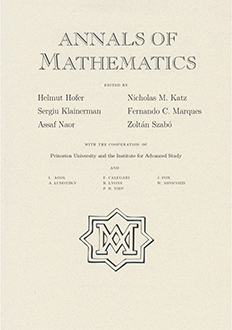Abstract
In his seminal 1961 paper, Wirsing studied how well a given transcendental real number $\xi$ can be approximated by algebraic numbers $\alpha$ of degree at most $n$ for a given positive integer $n$, in terms of the so-called naive height $H(\alpha)$ of $\alpha$. He showed that the supremum $\omega_n^\ast(\xi)$ of all $\omega$ for which infinitely many such $\alpha$ have $\vert\xi-\alpha|\le H(\alpha)^{-\omega-1}$ is at least $(n+1)/2$. He also asked if we could even have $\omega_n^\ast(\xi)\ge n$ as it is generally expected. Since then, all improvements on Wirsing's lower bound were of the form $n/2+\mathcal{O}(1)$ until Badziahin and Schleischitz showed in 2021 that $\omega_n^\ast(\xi)\ge an$ for each $n\ge 4$, with $a=1/\sqrt{3} \simeq 0.577$. In this paper, we use a different approach partly inspired by parametric geometry of numbers and show that $\omega_n^\ast(\xi)\ge an$ for each $n\ge 2$, with $a=1/(2-\mathrm{log} 2) \simeq 0.765$.
Citation
Anthony Poëls. "On approximation to a real number by algebraic numbers of bounded degree." Ann. of Math. (2) 201 (1) 307 - 330, January 2025. https://doi.org/10.4007/annals.2025.201.1.6
Information






